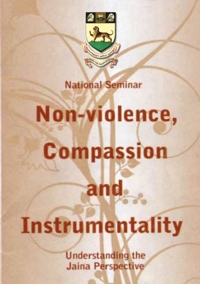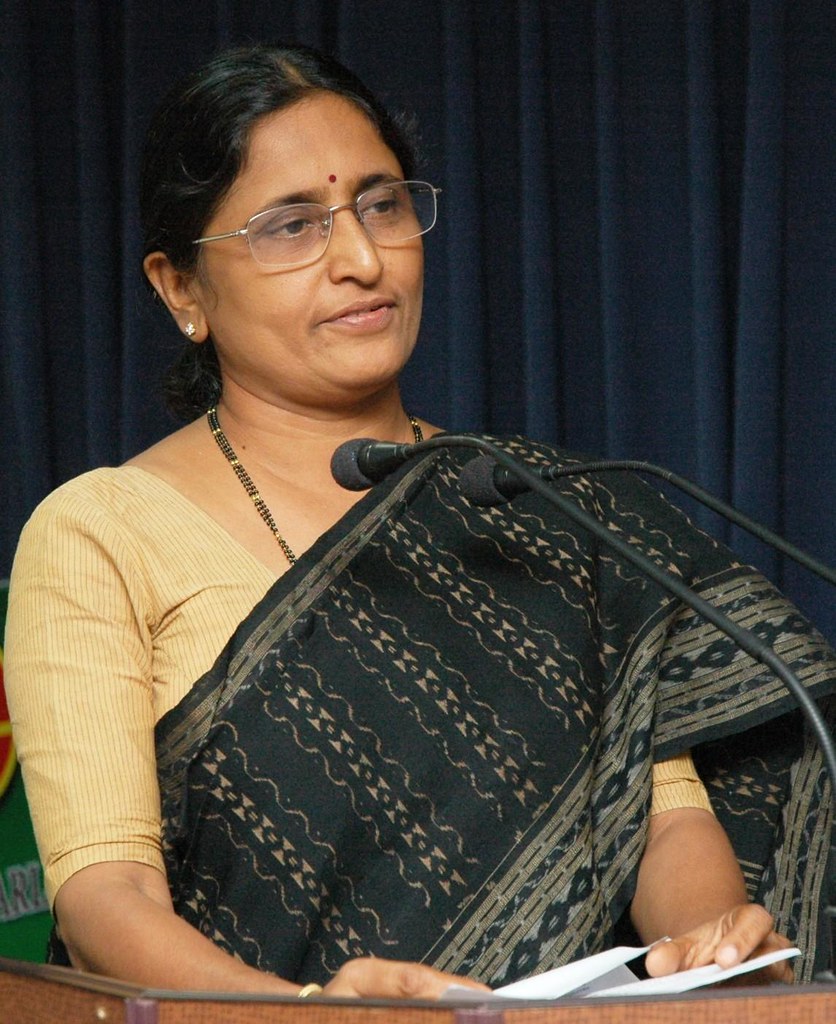 | Non-violence, Compassion and InstrumentalityA Jaina PerspectiveSeminar organized by the Department of Jainology of the University of Madras, 13 and 14 February 2009 Chennai, India |
14.02.2009
2.06 Compassion and Contentment to Sustain Unity of Life: An Ecological Perspective
Mystery shrouds the origin of life - varying versions put forth by scientists talk about its origin in space, in warm rock pools, in oceanic vents, on clays, and so on. The evidence so far suggests that life on earth started as a single breakthrough cell after hundreds of millions of years of chemical evolution. This ancestor cell divided and diversified over the course of billions of years into the fantastic variety that we know today. If this is true, then all life has a common origin, because all cells use the same type of RNA and DNA molecules for their genetic material. In fact, Charles Darwin wrote in The Origin of Species that all organic beings which have ever lived on this earth may have descended from one primordial form. Therefore, in a very real sense, all organisms on earth may be related to one another, as siblings, just as all humans appear to descend from a single family.
In India, this realization of the unity of life has been part of our common spiritual heritage for thousands of years, fed by the personal experience from the mystics of most of the world’s major religions. It is the essence of mystical experience to enter into the depths of consciousness and discover that none of us is separate from the rest of life. All creation is part of one infinite reality - or in more simple language, all of us are one.
Tracing the history of the human race reveals that when humans first emerged on this earth they too were part of Gaia’s self-regulating network. Our ancestors were hunter-gatherers who, by and large, treated their environment well and trod lightly on earth. They didn’t destroy Nature’s diversity and replace it with artificial systems of just a few crops and domesticated animals. Instead, they used natural diversity to the full. They collected dozens of different kinds of wild roots and leaves, and hunted a wide range of animals and fish.
Hunter-gatherer religion reinforced harmony with nature. To avoid over-exploitation, there were elaborate rules concerning which animals might be hunted and eaten, and when. All living things, and many non-living things like rivers or even stones, are believed to possess a soul and demand respect, just like humans.
But hunter-gatherers were humans just like us. When they grew more successful, their populations expanded. This was the critical development that pushed them to change the way they related to the environment. When they could not migrate, they were forced to start cultivating plants instead of collecting them. To get more food from the same land they had to clear away the diverse natural vegetation and replace it with a handful of food crops. And so agriculture began - about ten thousand years ago.
The agricultural revolution was a crucial moment in our alienation from nature. Agriculture separated us from nature and set us against her. Nature now was seen as a dangerous enemy rather than an ally. She was the tangled forest that was cleared to plant crops. She was the refuge of wild beasts that preyed on livestock and ate the crops. Wilderness was no longer a resource to be prized, but a threat to be crushed and controlled.
If we think back and do a little bit of introspection, we will realize that we were not always so very destructive: once we were an integrated and integral part of all of creation. And we can be so again, if we have the will.
Jainism - the green religion
In troubled times like today, characterized by rampant consumerist lifestyles, erosion in moral and spiritual values, widespread environmental degradation and destruction, with simmering violence and brutality taking a heavy toll on innocent lives, the relevance of the gentle religion of Jainism can hardly be overemphasized.
For eons, followers of Jinas, the spiritual victors, have walked the Indian soil as living examples of the Jain dharma of ahiṁsā (nonviolence), satya (truth) and an eco-friendly way of life. In the 2600 odd years since the birth of the last Jain Tīrthaṁkara, Bhagwan Mahāvīra, we can look at the relevance today of Jainism‘s unique elements, like conservation of nature, compassion as a living ideal, and non-violence.
Ahimsa and jīva dayā have made Jains great environmental conservationists. Eco-friendliness is interwoven into their day-to-day living and is based on a feeling of being trustees of the earth. “We are like the ādivasis or tribals,” says Muni Vidyanand, “We exist in harmony with the earth. The earth takes care of us, and so we take care of her. Man has polluted the earth because he thinks of her as a possession.” He picks up a speck of dust. “Tell me, who owns this?”
An attitude of reverence towards the earth, air, water, stems from the Jain belief that everywhere exist beings in different forms and in various stages of spiritual evolution. So if I cut a tree, I have killed a jīva (life) and therefore caused violence.
Lives lived simply, in awareness, with no strain on the land’s resources and in recognition of the ideal: Parasparopagraho jīvanam, which means that all life is bound together by mutual support and interdependence.
Satish Kumar, a former Jain monk and Editor of Resurgence, the famous eco-spiritual magazine published in the United Kingdom, quotes Muni Hitaruchi, “Nonviolence is not just a matter of personal behavior. Nonviolence includes social, political, economic and ecological dimensions. If there is social injustice, political oppression, wasteful industrial production and destruction of natural resources, then it is impossible to practice nonviolence.” Muni Hitaruchi walks from village to village asking people to seek contentment in quality of life rather than in the quantity of material possessions.
A-parigraha literally means non-possession, although it can also mean nonattachment to possessions. Among Jain ascetics, this is evidenced in the literal giving up of all possessions. At various other levels, it might also be interpreted as ‘letting go’ of attachments to objects, and even people and relationships. As the winds of materialism and consumerism blow forcefully across the country, we need to plant our feet more firmly in our soil and turn within. And perhaps remember the Jain ideal of aparigraha when toying with the temptation of adding to our store of abundant and overflowing material possessions.
Jainism stresses compassion for every living being, even microscopic life. It is the intention to harm, the absence of compassion, which makes an action violent, for without violent thought there can be no violent action. When violence enters your mind, you are exhorted to remember Mahāvīra’s words: “You are that which you intend to hit, injure, insult, torment, persecute, torture, enslave or kill.” If you step into the other’s shoes, you will desist from harming others. Moreover, you will positively strive to cultivate amity or maitri towards all forms of life.
Compassion or karuṇa is also at the transcendental and experiential heart of the Buddha’s teachings. He was reputedly asked by his secretary, Ānanda, “Would it be true to say that the cultivation of loving kindness and compassion is a part of our practice?” the Buddha replied, “No. It would not be true to say that the cultivation of loving kindness and compassion is part of our practice. It would be true to say that the cultivation of loving kindness and compassion is all of our practice.” In Buddhism, compassion or anukampā is a universal ideal without boundaries.
The words karuṇa and dayā, in Sanskrit, are used as synonyms for compassion. The Bṛhāspatī Smṛti says: “Complete love belongs to one who always delights in behaving towards all beings as equal to the self, for their good and for their welfare.” Other texts like the Raghuvaṁsa and the Hitopadeṣa remind us that true dayā does not depend on the virtues of the being to which it is addressed, but is defined as the desire welling up in the heart to remove the hardships of others, even if it implies effort on one’s part.
Compassion in the Bible is personified as Yahweh, God, who is worshipped as a loving Father-Mother with special care for the poor, the weak and the suffering. Christianity considers Jesus the finest reflection of God’s love and compassion. His compassion climaxes in a crucifixion that is the outcome of a life lived in solidarity with those who suffer. Christ is proclaimed not only as one who “suffers with,” but as the one who takes upon Himself the sufferings of others.
In Islam, Allah is The Compassionate One. Among the 99 names of Allah that are commonly invoked, the names Al-Rahman and Al-Rahim suggest tenderness, gentleness, forgiveness, mercifulness and benevolence. “He encompasses everything in compassion or rahma,” says the Quran.
Ahiṁsā holds that the life of every creature is sacred and cannot be destroyed by violence. Nonetheless, in the struggle for truth, one must be ready to suffer oneself. The compassionate one readily “chooses to die himself rather than cause others to die,” says Guru Nanak. Dayā cognitively observes the other’s pain; and gets touched by it. Compassion inevitably engenders fruitful action.
The implications of the understanding of the unity of life are very practical. For one, it means that we cannot find happiness at someone else’s expense. If we try, it is not only the others who will suffer, we will suffer too. To illustrate, if I am frustrated and angry, I will get asthma or peptic ulcer; if I am resentful, I will get high blood pressure. More than that, if I try to make money at the expense of the environment, all of us are going to suffer - I have to drink the water and breathe the air too.
On the other hand, if I live for the welfare of the whole, my own individual welfare is included in that. If I am patient - everyone near me benefits - including me. I will be more relaxed, more secure, and better able to weather the storm and stress that is an inescapable part of living.
The unity of life is an unalterable law, the central law of existence. We cannot break it; we can only break ourselves against it. This is our greatest source of suffering and there is nothing more grievous than to see everyday how this law is flouted - by nations, by families, by individuals - everywhere. After thousands of years of evolution we should be beginning to understand the basis of living; nobody can attain fulfillment separately. For all of us, our destiny is one and indivisible.
Eknath Eswaran, (in The Compassionate Universe) says that it is not enough to have a poetic awareness of unity. In these troubled times, it is essential that we strive for the skilful capacity to apply spiritual understanding to bridge divisions at home, heal wounds in the minds of individuals, bring together estranged communities, put out the flames of violence, and banish the menace of nuclear war that threatens life today.
Modern life has become increasingly disconnected with the natural world. All of us tend to be so busy rushing from one job to the next that we scarcely find the time to observe or notice what is going on around us. The seasons come and go; flowers bloom and fade away, myriads of forms of life appear and disappear before us, but we tend to be oblivious to all that is happening around us.
It is vitally important that we re-establish this connection with the natural world. We are very much a part of this world and we are connected to every other species through a complex web of relationships though we may not realize it. In fact, in theosophical literature it has been remarked that when you tread on a blade of grass, you trouble the star! That is the degree of interconnectedness that is the reality between all that exists on this earth.

 Dr. Geetha Jaykumar
Dr. Geetha Jaykumar